To cope with ever increasing Internet traffic, the bandwidth of next-generation wireless access is rapidly expanding. At the same time, the current spectrum simply cannot support the needed bandwidth, so higher frequencies are being evaluated. Multiple options from unlicensed 5.8 GHz terrestrial stations to fleets of low-orbit satellites blanketing the Earth, are being considered. The path to higher bandwidth lies with higher frequencies to deliver on that promise, requiring new mixers with improved performance. The new LTC5549 mixer from Linear Technology has been launched to support just this need.
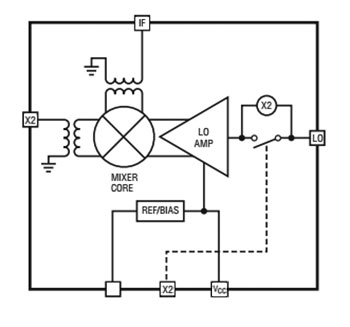
The LTC5549 is a passive double balanced mixer that functions as either an up- or down-converter. It has a very wide RF frequency range from 2 to 14 GHz. The mixer offers exceptionally high linearity – 28.2 dBm IIP3 at 5.8 GHz and 22.8 dBm at 12 GHz – that improves the dynamic range of both transmitters and receivers. The LTC5549 enables efficient microwave transmitter and receiver designs with an integrated LO buffer that needs only 0 dBm drive, effectively eliminating the need for external high power LO drivers. The LTC5549 also has an integrated, bypassable frequency doubler for the LO signal, allowing the device to use lower cost, commonly available low frequency synthesizers. The double balanced mixer employs wideband integrated balun transformers, optimized to extend the LO and RF frequency bandwidth while enabling single-ended operation. Its IF supports a wide bandwidth from 0.5 to 6 GHz. All three ports are matched to 50 ohms and have excellent port-to-port isolation, minimizing undesirable LO leakage, which eases external filtering.
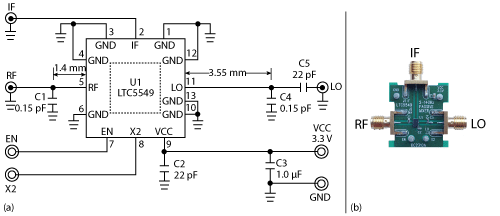
Figure 1 LTC5549 evaluation board schematic (a) and assembly (b).
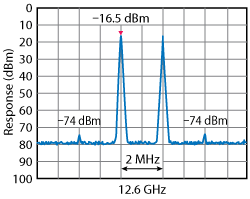
Figure 2 Third-order intermodulation measurement at 12.6 GHz with 2 MHz tone separation.
SiGe BiCMOS TECHNOLOGY
Most microwave mixers are built using discrete GaAs diodes or FETs in hybrid modules. In contrast, the LTC5549 is constructed using a very high frequency advanced SiGe BiCMOS process. SiGe BiCMOS enables a high level of integration, including the on-chip LO buffer and microwave balun transformers. The monolithic die is flipped and soldered onto a tiny 3 × 2 mm lead-frame and encapsulated in a plastic surface-mount package. Bond wires and their associated inductance are eliminated to enhance the device’s microwave performance. The inherently small package, along with minimum external circuitry, makes for a very small footprint.
The new mixer’s 22.8 dBm IIP3 is a standout in its class and enhances the dynamic range of receivers or transmitters. For a receiver, the higher IIP3 boosts robustness in the presence of close-in high power interference, whether from out-of-band, unintentional emitters or self-induced, such as leak-through from another transmitter in multi-sectored systems. Higher dynamic range receivers provide added design margin and are more forgiving in handling high blockers – as airwaves continually degrade with additional radio deployments.
Similarly for transmitters, a higher IIP3 (hence higher OIP3) mixer produces lower spurious products and improves spectral purity with better ACPR performance. This is particularly important for radios that use higher order modulation, such as 1024 QAM. The improved linearity produces better definition and accuracy of the constellation. Additionally, higher IIP3 allows the mixer to operate at elevated input power and, therefore, more robust output power. The extra design margin eases design constraints, providing flexibility.
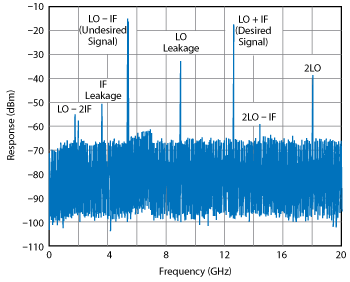
Figure 3 Wideband output spectrum showing all spurious products.
DESIGN DIFFERENTIATION
The LTC5549’s integrated LO amplifier effectively eliminates the +10 to +17 dBm LO amplifier that is typically required to drive traditional passive microwave mixers. Its 0 dBm LO input level enables the mixer to be driven directly from a PLL/synthesizer without a buffer amplifier. As well as reducing cost, the low LO power produces significantly lower LO leakage to the IF and RF ports, so less external filtering is necessary to contain any out-of-band emissions associated with the source. Another benefit is not having a high power radiation source on the PC board. This also lowers cost by reducing the RF shielding that plagues many designs requiring high power LO signals.
The LTC5549 incorporates patent-pending advances in planar balun transformer designs, enabling the monolithic mixer to operate over an extremely wide bandwidth. Unprecedented symmetry is achieved, with exceptional balanced operation, optimum spurious cancellation and flat frequency response. For example, the 50 ohm RF port with its built-in transformer and a 0.15 pF external capacitor achieve better than 10 dB return loss from 2 to 14 GHz. Similarly, with a 0.15 pF shunt capacitor and a series capacitor at the LO input, the port is matched from 1 to 12 GHz; return loss better than 10 dB across that entire frequency range. 5G is expected to deliver 1 Gbps data rates. To achieve such speeds, instantaneous radio bandwidth will need to be 1 GHz or higher. The LTC5549 has excellent bandwidth that can support a flat response of more than 1 GHz.
Microwave test equipment also benefits from a compact, high linearity mixer such as the LTC5549. As RF test equipment pushes to higher frequencies, linearity and bandwidth performance must also be improved to keep pace with the performance of the device-under-test.
3.6 to 12.6 GHz UP-CONVERTER
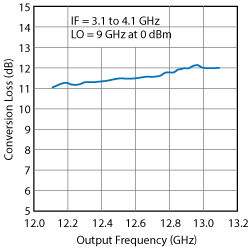
Figure 4 The up-conversion mixer conversion loss is approximately 11.5 dB at 12.6 GHz with 1 dB flatness over a 1 GHz bandwidth.
To show the performance of the LTC5549, the mixer is used for an up-converter that converts a 3.6 GHz IF signal to a 12.6 GHz RF carrier. The internal 2× LO option is bypassed, so a 0 dBm, 9 GHz signal from a clean laboratory signal source generated the low-side LO drive.
Performance measurements were made using a standard LTC5549 evaluation board (see Figure 1). Because the mixer and evaluation board’s components are broadband matched, the board was used as is, without alteration.
Figure 2 shows the mixer’s linearity at 12.6 GHz, using two -5 dBm tones separated by 2 MHz. The output third-order intermodulation distortion spurs measured -57.5 dBc, corresponding to an IIP3 of +23.8 dBm. The RF output spectrum from DC to 20 GHz is shown in Figure 3. No external filtering was used to see where all the spurious products fall. The LO leakage power was some 14 dB less than the 12.6 GHz carrier and 3.6 GHz below the carrier frequency, so filtering will not be an issue. The 2LO-IF product is the closest spur and falls 1.8 GHz away from the carrier, with a residual power better than -40 dBc. At 12.6 GHz, the mixer’s output exhibited 1 dB flatness over a 1 GHz bandwidth (see Figure 4), showing it is capable of supporting next-generation broadband radios.
The LTC5549 exhibits excellent IIP3 that can enhance the dynamic range of either receiver or transmitter applications. It has an integrated LO buffer, producing very low LO leakage and reducing cost. Its integrated on-chip balun transformers provide extraordinarily wide bandwidth to simplify designs and enable a very compact layout.
Linear Technology Corp.
Milpitas, Calif.
www.linear.com
